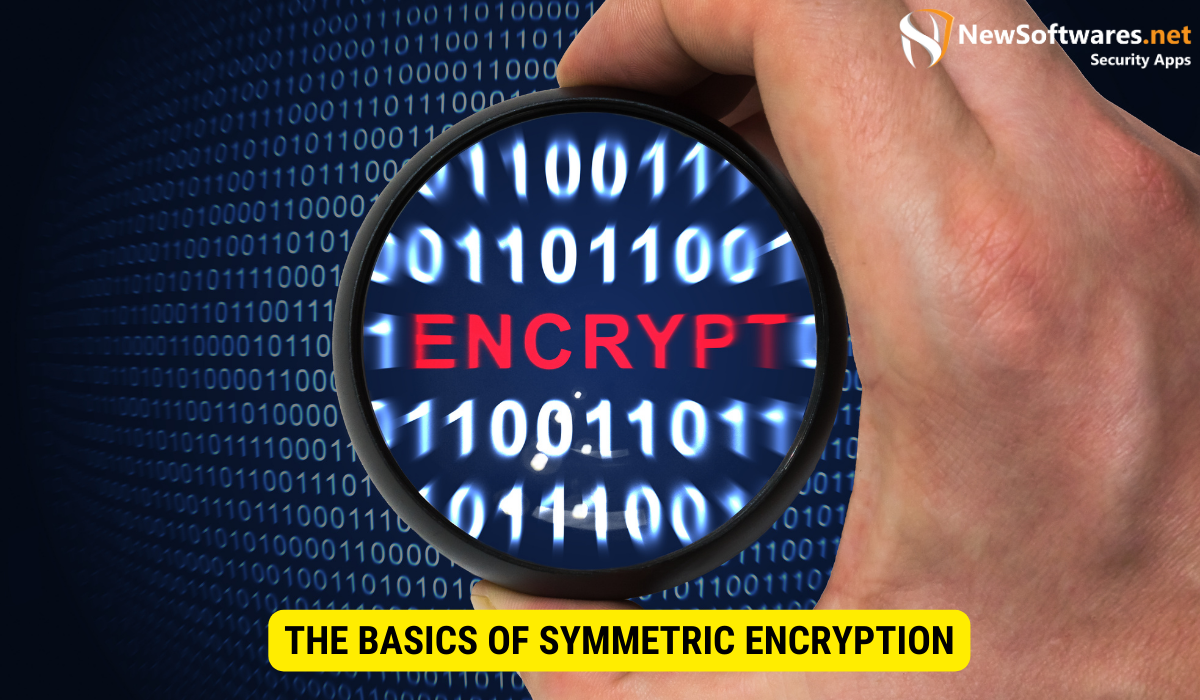Symmetric encryption is a fundamental concept in data protection. It plays a vital role the confidentiality and integrity of sensitive information. Together, we will delve into the intricacies of symmetric encryption and explore the significance of key count in safeguarding data.
The Basics of Symmetric Encryption

Symmetric encryption is a cryptographic method where the same key is used for both encryption and decryption of data. It is a secure and efficient method for ensuring privacy in communication and storage of sensitive information.
When it comes to securing data, symmetric encryption is a fundamental tool in the field of cryptography. It provides a way to protect information from illegal access by using a shared key that is known only to the sender and receiver.
But what exactly is symmetric encryption? How does it work? Let’s dive deeper into the world of symmetric encryption and explore its inner workings.
What is Symmetric Encryption?
Symmetric encryption also recognized as private key encryption or shared key encryption, is a cryptographic algorithm that uses a single key to perform both encryption and decryption of data. This key is shared between the sender and receiver, hence the name “symmetric.”
Imagine you have a secret message that you want to mail to someone. With symmetric encryption, you would use the same key to scramble the message into an unreadable format (encryption) and then use that same key to unscramble it back into its original form (decryption) once it reaches the intended recipient.
The key used in symmetric encryption is a sequence of bits, typically represented as a string of characters. It is essential to keep this key secure and known only to the allowed parties involved in the communication. If an unauthorized person gains access to the key, they can decipher the encrypted data and potentially compromise its confidentiality.
The Role of Symmetric Encryption in Data Protection
Symmetric encryption plays a crucial role in data protection by providing confidentiality, integrity, and authentication of information. It makes sure that only authorized parties can access and manipulate the data, while also verifying its authenticity.
Confidentiality is one of the primary goals of symmetric encryption. By encrypting data using a shared key, it becomes unintelligible to anyone who does not have the key. This ensures that even if an attacker intercepts the encrypted data, they won’t be able to make sense of it without the key.
Integrity is another essential aspect of data protection. With symmetric encryption, any tampering or modification of the encrypted data can be easily detected. This is achieved through the use of cryptographic algorithms that generate a unique value, known as a hash, for the encrypted data. By comparing the hash of the decrypted data with the original hash, the receiver can verify if the data has been tamper with during transmission.
Authentication is also a critical component of symmetric encryption. It makes sure that the sender and receiver can verify each other’s identities and establish a secure communication channel. By means of the shared key, the sender can encrypt a message and attach a digital signature to it. The receiver can then use the same key to decrypt the message and verify the signature, ensuring that the message indeed originated from the claimed sender.
Overall, symmetric encryption provides a robust and efficient method for protecting sensitive information. Its ease and speed make it an ideal choice for securing data in various applications, ranging from secure messaging platforms to secure storage systems.
Now that we have explored the basics of symmetric encryption, it’s clear that this cryptographic technique is a cornerstone of modern data protection. Its ability to provide confidentiality, integrity, and authentication makes it an invaluable tool in the world of cybersecurity.
The Mechanism of Symmetric Encryption
Symmetric encryption operates based on a specific mechanism that involves key generation, encryption, and decryption.
Symmetric encryption is a cryptographic method that uses the same key for the encryption & decryption processes. This key is known as the secret key & it is shared between the sender and the receiver.
When using symmetric encryption, the sender first takes the plaintext message and applies an encryption algorithm along with the shared secret key. This process converts the plaintext into ciphertext, which is a jumbled version of the original message. The ciphertext is then transmitted to the receiver.
Upon receiving the ciphertext, the receiver uses the same secret key and encryption algorithm to decrypt the message. This process reverses the encryption, converting the ciphertext back into plaintext, allowing the receiver to read the original message.
How Symmetric Encryption Works
In symmetric encryption, the sender uses an encryption algorithm and the shared secret key to convert the plaintext into ciphertext. The ciphertext is then transmitted to the recipient, who uses the same key and algorithm to decrypt it back into plaintext.
The encryption algorithm used in symmetric encryption play a key role in the safety of the encrypted message. It ensures that the ciphertext is sufficiently scrambled, making it difficult for unauthorized persons to decipher the original message without the secret key.
There are various encryption algorithms used in symmetric encryption, for instance the Data Encryption Standard, Advanced Encryption Standard & Triple Data Encryption Standard (3DES). These algorithms employ complex mathematical operations to transform the plaintext into ciphertext and vice versa.
The Process of Key Generation and Distribution
Generating and distributing the secret key is a crucial aspect of symmetric encryption. The key needs to be safely shared between the sender and receiver, ensuring that it remains confidential and protected from unauthorized access.
Key generation involves creating a random or pseudorandom sequence of bits that will serve as the secret key. The length of the key is an significant factor in the security of symmetric encryption. Longer keys provide a higher level of security as they increase the number of possible combinations, making it more difficult for attackers to guess the key.
Once the secret key is generated, it needs to be securely distributed to the sender and receiver. This process can be challenging, especially when the sender and receiver are not physically present in the same location. Various methods can be used for key distribution, such as using secure channels, key exchange protocols, or trusted third parties.
It is essential to ensure that the secret key remains confidential during the distribution process. If an attacker gains access to the secret key, they can easily decrypt the ciphertext and access the original message. Therefore, secure key distribution mechanisms are vital to maintaining the integrity and confidentiality of symmetric encryption.
The Importance of Key Count in Symmetric Encryption
The number of keys used in symmetric encryption has a important impact on the overall security and strength of the encryption scheme.
Understanding Key Count
The key count refers to the number of keys employed in symmetric encryption. It influences the complexity of the encryption algorithm and determines the level of security provided by the encryption scheme.
The Impact of Key Count on Encryption Strength
The encryption strength increases exponentially with the increase in key count. As more keys are utilized, the complexity of the encryption algorithm grows, making it significantly more challenging for attackers to determine the keys and decrypt the encrypted data.
Advantages and Disadvantages of Symmetric Encryption
Symmetric encryption offers several advantages, but it also has its limitations that need to be considered.
The Benefits of Using Symmetric Encryption
- Efficiency: Symmetric encryption algorithms are computationally efficient, making them suitable for encrypting and decrypting large volumes of data.
- Speed: Due to the simplicity of the algorithms, symmetric encryption offers fast processing times, enabling real-time encryption and decryption.
- Proven Security: Symmetric encryption algorithms have undergone extensive scrutiny and are considered secure if implemented correctly.
- Compatibility: Symmetric encryption algorithms are widely supported and can be implemented across various platforms and systems.
- Resource-Friendly: Symmetric encryption consumes fewer computing resources compared to asymmetric encryption, making it ideal for resource-constrained environments.
Potential Drawbacks and Limitations
- Key Management: The secure distribution and management of the secret key can be a challenging task, especially in large-scale deployments.
- Key Exchange: Symmetric encryption requires a secure channel for exchanging the secret key between the sender and receiver, which can be vulnerable to interception.
- Scalability: As the number of participants increases, symmetric encryption becomes increasingly complex to manage, especially when there is a need to change the shared key.
Future of Symmetric Encryption

Symmetric encryption continues to be a vital component in safeguarding data, and it is poised to play a crucial role in the future of data protection.
Emerging Trends in Symmetric Encryption
New advancements in symmetric encryption are focused on enhancing performance, scalability, and key management. These improvements aim to address the existing limitations and further strengthen the security of symmetric encryption.
The Role of Symmetric Encryption in a Data-Driven Future
In a data-driven future, where the volume and complexity of data are rapidly increasing, symmetric encryption will be indispensable for protecting sensitive information across various industries, including finance, healthcare, and telecommunications.
Key Takeaways
- Symmetric encryption uses a solo key for both encryption and decryption.
- The number of keys used in symmetric encryption impacts the overall strength and security of the encryption scheme.
- Symmetric encryption offers efficiency, speed, proven security, compatibility, and resource-friendliness as advantages.
- The secure distribution and management of the secret key can pose challenges in symmetric encryption.
- Symmetric encryption will continue to play a vital role in data protection in the future, with ongoing advancements to address existing limitations.
FAQs
Is symmetric encryption secure?
Yes, symmetric encryption is secure if implemented correctly. However, the security heavily relies on the secrecy of the shared key and proper key management practices.
How does symmetric encryption differ from asymmetric encryption?
Symmetric encryption uses a single key for both encryption and decryption, while asymmetric encryption uses two unlike keys: a public key for encryption and a private key for decryption.
Can symmetric encryption be used for secure communication over the internet?
Yes, symmetric encryption can be used for secure communication over the internet by leveraging secure key exchange protocols for instance Transport Layer Security (TLS).
What are some common symmetric encryption algorithms?
Some common symmetric encryption algorithms include Advanced Encryption Standard (AES), Data Encryption Standard (DES), and Triple DES (3DES).
What is the role of symmetric encryption in data privacy regulations like GDPR?
Symmetric encryption plays a crucial role in data privacy regulations by ensuring the confidentiality and integrity of personal and sensitive information, thereby supporting observance with regulations like the General Data Protection Regulation.
Conclusion
Understanding symmetric encryption and the key count for information protection is essential for protecting sensitive information in today’s digital landscape. By grasping the basics, mechanism, and significance of key count, organizations can make informed decisions and implement strong data protection measures. Despite its advantages and limitations, symmetric encryption remains a valuable tool for ensuring privacy and upholding the security of critical data.
